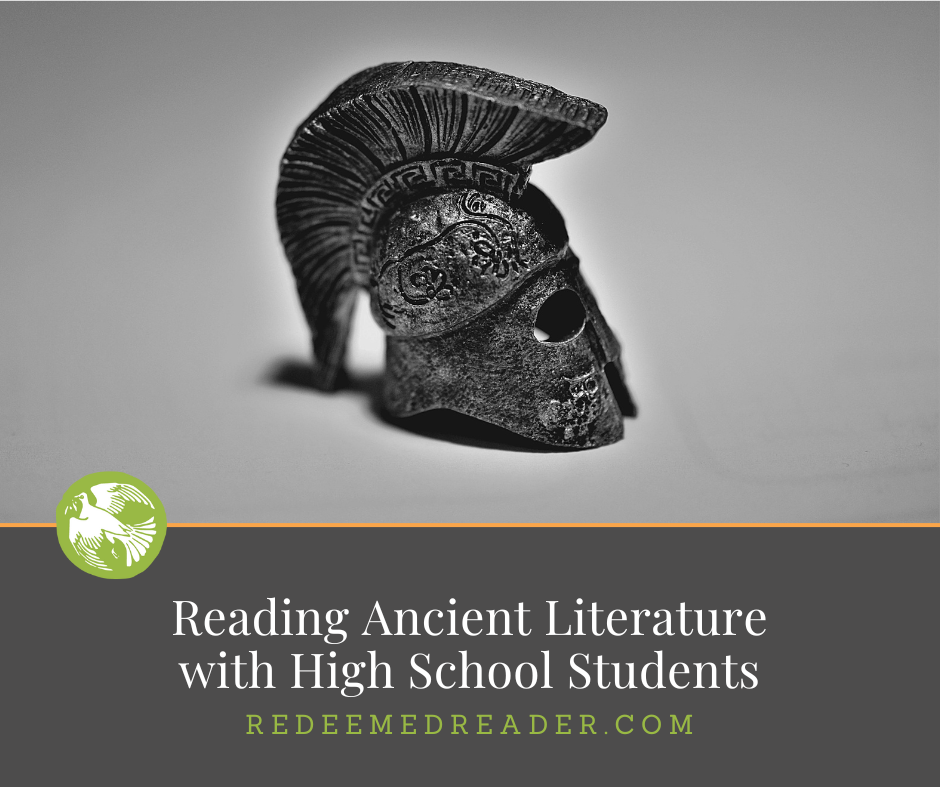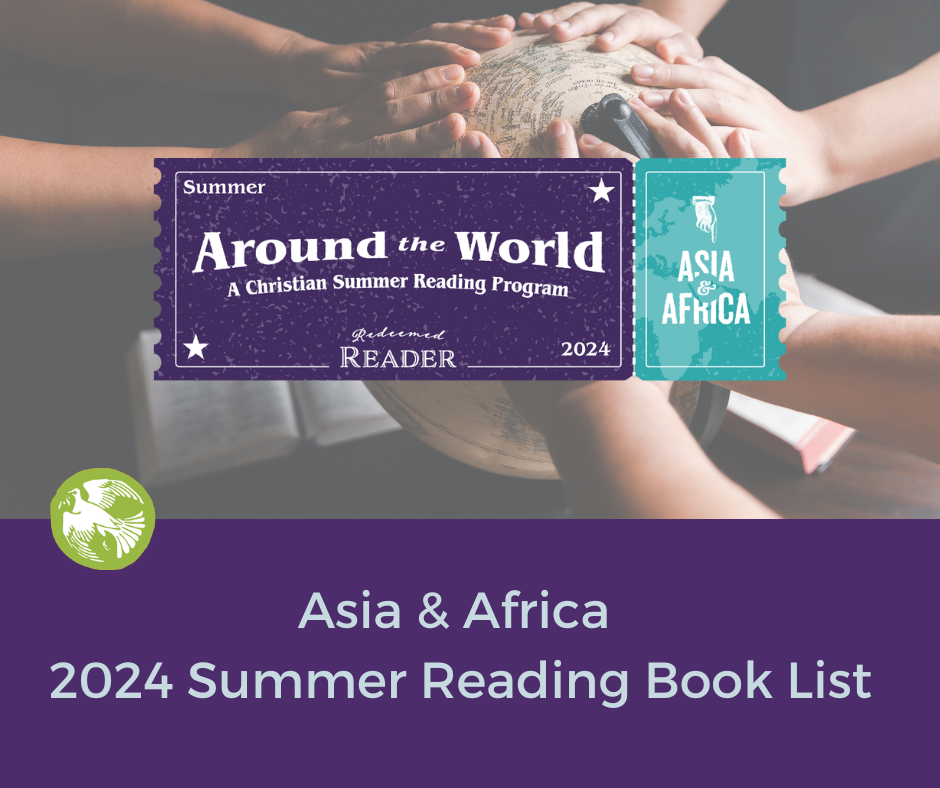Some of us love ancient literature, especially the great Homeric epics.
Others shudder at the thought.
I’m in the former camp, but I haven’t always been. I dreaded reading ancient literature in high school, especially Homer’s Iliad. I remember very little other than being unimpressed.
Now, as I plan to teach not only The Iliad, but The Odyssey and The Aeneid to high school students this school year, I’m girding my loins, so to speak. To date, I’ve taught Shakespeare to hundreds of students, Beowulf to a hundred or so, and countless “hard” works of poetry to my own three teenagers. There’s no magic formula, but here’s what’s worked for me.

#1: DON’T MISS THE FOREST FOR THE TREES
We teachers (school or home) love to dive in and discuss all the things: Homeric epithets, plot structure, ancient understandings of various natural symbols, *all* the Greek/Roman gods/goddesses, each sub-plot, various thematic elements, …. We want to know that our students have mastered this epic or that Greek play. Can they rattle off all the important details? Could they pass a comprehension test?
Guess what: your students don’t care. Should they care about those things (the trees)? Perhaps. Someday. But this is not that day. If this is the first time these students are experiencing Homer (or Virgil or Sophocles or whomever), then the story (the forest) is the main focus. At this stage of the game, we want them to come away caring about the work itself and interested enough (perhaps) to read the work more closely another time.
#2: READ A SUMMARY OF THE ANCIENT WORK
All of the ancient works are now works-in-translation. Many of them include cultural references that our students won’t readily grasp. Read a good summary first, if one is available (alternatively, watch or listen to one on YouTube, but preview first!). Don’t worry about “spoiling the story.” This frees students up to actually get what’s happening when they read the real version.
The Odyssey is not told linearly; it’s easy to lose the thread of the main plot as we jump back and forth from Odysseus to Telemachus, from the present to Odysseus’s experiences before the start of the book. And who are all these people dying in The Iliad? Do they all matter equally? Who are the Trojans, the Argives, the Achaeans, the Greeks, …. Wait, I thought only two groups were fighting.
Before we read Antigone, we need to know who Oedipus was and what the significance of this family’s demise means. Who was Aeneas (from The Iliad), and why is he the hero of The Aeneid?
If you are comfortable doing so, you can also simply tell your students a summary. I often do both: have students read a summary and then give a brief teaser-type summary in class. For instance, I just told my students this week (in anticipation of reading books 9-12 of The Odyssey):
Guess what, guys? This week, you’re going to read some of the most famous scenes from The Odyssey. The cyclops story? Book 5. Have you heard of Scilla and Charybdis? (blank looks) Between a rock and a hard place? (nodding heads) That story’s in here, too. Odysseus is going to tell Arete and the Phaeacians what happened to him after he sailed away from Troy. We’ll also find out why Poseidon is so mad at him.
I keep it short and give them “hooks” to hang the story on as they read.
#3: CHOOSE AN ACCESSIBLE TRANSLATION
People have spent a lot of ink (and website space) debating which translation is “the best.” Guess what: any reputable translation is suitable. Try a few and read them (or read the same portion of each): which reads easily in English? It doesn’t matter if the translator has mastered Homer’s hexameter if the resulting English version is clunky and soporific. The translator might deliver the “majesty” of Homer’s original language only to put the text out of reach for most students. We want them to grasp the majesty of the story first.
Look for a translation that is direct, fresh, and compelling. If students will be allowed to listen, then consider different narrators. It makes a difference! Listening to Dan Stevens narrate Fitzgerald’s Iliad is a marvelous listening experience. Reading Fitzgerald is clunkier because he uses Greek versions of the names instead of the more common English versions (since I am a native English speaker and have grown up hearing and reading about Achilles, it’s far easier to read a version of the Iliad with “Achilles” than something like “Akhilleus”).
My personal favorite translation of The Odyssey for students (and myself) is Emily Wilson’s translation. I’m waiting anxiously for her Iliad to come out this month. I suggested Fitzgerald’s translation of the Iliad in audio and Caroline Alexander’s in print for my students this summer. But there are countless others to choose from!
#4: KEEP ASSIGNMENTS RELEVANT TO YOUR GOAL(S)
My primary goals for my class are for my students to read these great works, grasp the stories, begin to see why we’re still reading them thousands of years later, and discuss their thematic ideas. To that end, I’m not assigning lengthy analytic essays or having them annotate Homeric epithets. For The Iliad, my students drew a stick figure comic for each “book” (there are 24 books, or chapters, in The Iliad). This helped them keep the storyline in their heads along with the key characters. For Antigone, we’re going to look at other historical figures who also violated the laws of the state for the sake of conscience. My students will get to choose a work from this semester to create a movie poster for (including a summary, main characters, a theme song, etc.). They’ll have to analyze the work in the process.
I’ve assigned essays in the past, and they can work well as long as I keep the essay topic(s) to what we actually discuss in class. Perhaps students compare/contrast two key characters. They might trace a thematic element across several works, or discuss the ancient Greek idea of heroism, or examine Penelope in light of Proverbs 31, or compare/contrast Greek gods to the biblical God or … I’m sure you can come up with many more on your own! But an analytical essay is not the primary goal of my class this fall. We’re going to keep written work to commonplace entries (a quotation from the book plus a brief reflection). Then, we’ll discuss and discuss some more during class.
#5: ENJOY THE RIDE: READING ANCIENT LITERATURE WITH HIGH SCHOOL STUDENTS IS REWARDING
Enjoy the Iliad? I’m sure those of you who’ve read this book recently are scratching your heads. But keeping the main thing the main thing (keeping the story front and center without worrying about the nitty gritty) will yield big results.
We’ve had a great time so far; my students are telling me World Lit is their favorite class. And that’s after reading The Iliad and a third of The Odyssey. They’re sending me memes and discussing big ideas and key characters intelligently in class. Respect your students enough to let them read hard books and grapple with big ideas. High school students have Opinions about life, and the great works of antiquity do, too. It’s a perfect match.
Stay Up to Date!
Get the information you need to make wise choices about books for your children and teens.
Our weekly newsletter includes our latest reviews, related links from around the web, a featured book list, book trivia, and more. We never sell your information. You may unsubscribe at any time.
Support our writers and help keep Redeemed Reader ad-free by joining the Redeemed Reader Fellowship.
Stay Up to Date!
Get the information you need to make wise choices about books for your children and teens.
Our weekly newsletter includes our latest reviews, related links from around the web, a featured book list, book trivia, and more. We never sell your information. You may unsubscribe at any time.
We'd love to hear from you!
Our comments are now limited to our members (both Silver and Golden Key). Members, you just need to log in with your normal log-in credentials!
Not a member yet? You can join the Silver Key ($2.99/month) for a free 2-week trial. Cancel at any time. Find out more about membership here.
1 Comments
Leave a Comment
You must be logged in to post a comment.




I teach World Lit at a small Christian high school. Every year we plow through Edith Hamilton’s “Mythology” because so much of our cultural heritage comes from that mythological influence. This year I tried something different – trying to help my students see the forest instead of the trees! I introduced them to a handful of archetypes and had them read key stories from “Mythology,” looking for archetypes, Biblical connections and pop culture connections. They seemed to enjoy this approach, which I hope will prepare them for our unit on allusions and a portion of “Don Quixote.”